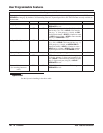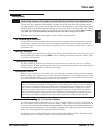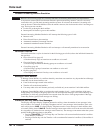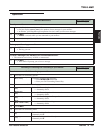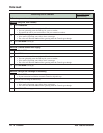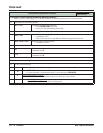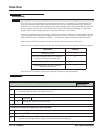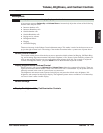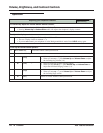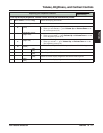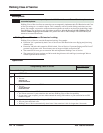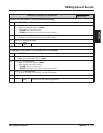
Voice Over
174 ◆ Features DSX Feature Handbook
Voice Over
Description
Voice Over lets a user get through to a keyset extension user busy on a handset call. With Voice Over, the
busy keyset extension user hears an alert tone followed by the voice of the interrupting party. The keyset
extension user can respond to the interrupting party without being heard by the original caller. If desired, the
keyset extension user can easily switch between their original caller and the interrupting co-worker. The
original caller and the interrupting party can never hear each other’s conversation.
Voice Over could help a lawyer, for example, waiting for an urgent call. While on a call with another client, the
lawyer’s paralegal could announce the urgent call as soon as it comes in. The lawyer could then give the para-
legal instructions on how to handle the situation — all without the original client hearing the conversation.
Either a keyset or SLT can initiate a Voice Over, but only a keyset can receive a Voice Over.
Voice Over uses a system Conference circuit. The following table shows the system’s Conference capacities:
The system’s 32 Conference circuits are dynamically allocated as users request them.
Operation
Get through to a co-worker busy on a handset call — without interrupting their call.
Description Capacity
Conference circuits 32
Maximum simultaneous users in Conference
(total of all Conferences system-wide)
32
Maximum simultaneous conferences 8
Maximum parties in any one Conference
(lines and/or extensions)
8
Using Voice Over
In these instructions:
[Super Display Soft Key]
[Keyset Soft Key]
To initiate a Voice Over to a busy extension:
1.
Listen for busy/ring tone.
• If you don’t hear busy ring, you cannot Voice Over.
2.
Do one of the following.
a.
[Vovr]
[Voice Over]
Press to select Voice Over, then speak with your co-worker.
b.
Dial 9, then speak with your co-worker.
To respond to a Voice Over alert one to your extension:
1.
Listen for two beeps while on a call.
2.
Press and hold MUTE.
3.
Release MUTE to talk to your initial caller.
• You can repeat this procedure as long as Voice Over initiator doesn’t hang up.



